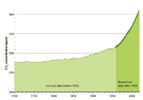- Joined
- 30 June 2008
- Posts
- 15,667
- Reactions
- 7,518
As if.. For such a steady careful thinker Sean you certainly throw up fanciful ideas like confetti. I'm still trying to get my head around "a wealthy World with abundant and cheap 24/7 energy ". Just throw up that against the wall and see if it sticks .You talk about sea level rise as if one Friday afternoon all is fine and then over the weekend the ocean rises 100m. At last review it was still about 3mm per year.
As far as 100 m weekend sea level rises ? Another piece of Sean hyperbole.
Firstly no one needs 100 metres of sea level rise to create a human disaster. We don't even need a 10 metre rise to wipe out most coastal cities.
Anything between 1-3 metres of sea level rise would be sufficient to make most coastal cities uninhabitable in their present forms. And that doesn't take into consideration the effects of storm surges which would force storm water far further inland.
When would cities be threatened by rising oceans ? When will cities and economies begin to realise they don't have a future ? It won't be when they are underwater. It will happen far sooner than that as insurance companies recognise coastal regions are just uninsurable and make it impossible to sell properties in areas under threat. For example Florida
How lucky do we feel. Ice melt at the Poles has been accelerating at an exponential rate.

Accelerating melt of ice sheets now 'unmistakable'
Greenland and Antarctica are increasing their contribution to the annual rise in global sea levels.

More bad news for Florida's struggling insurance market: Reinsurance rates are going up
As Florida lawmakers try to stabilize the troubled property-insurance system next month, they could face worsening problems with reinsurance, a critical part of the system. Overall reinsurance prices are expected to increase by more than 10 percent in 2023, due to disasters such as Hurricane Ian...










